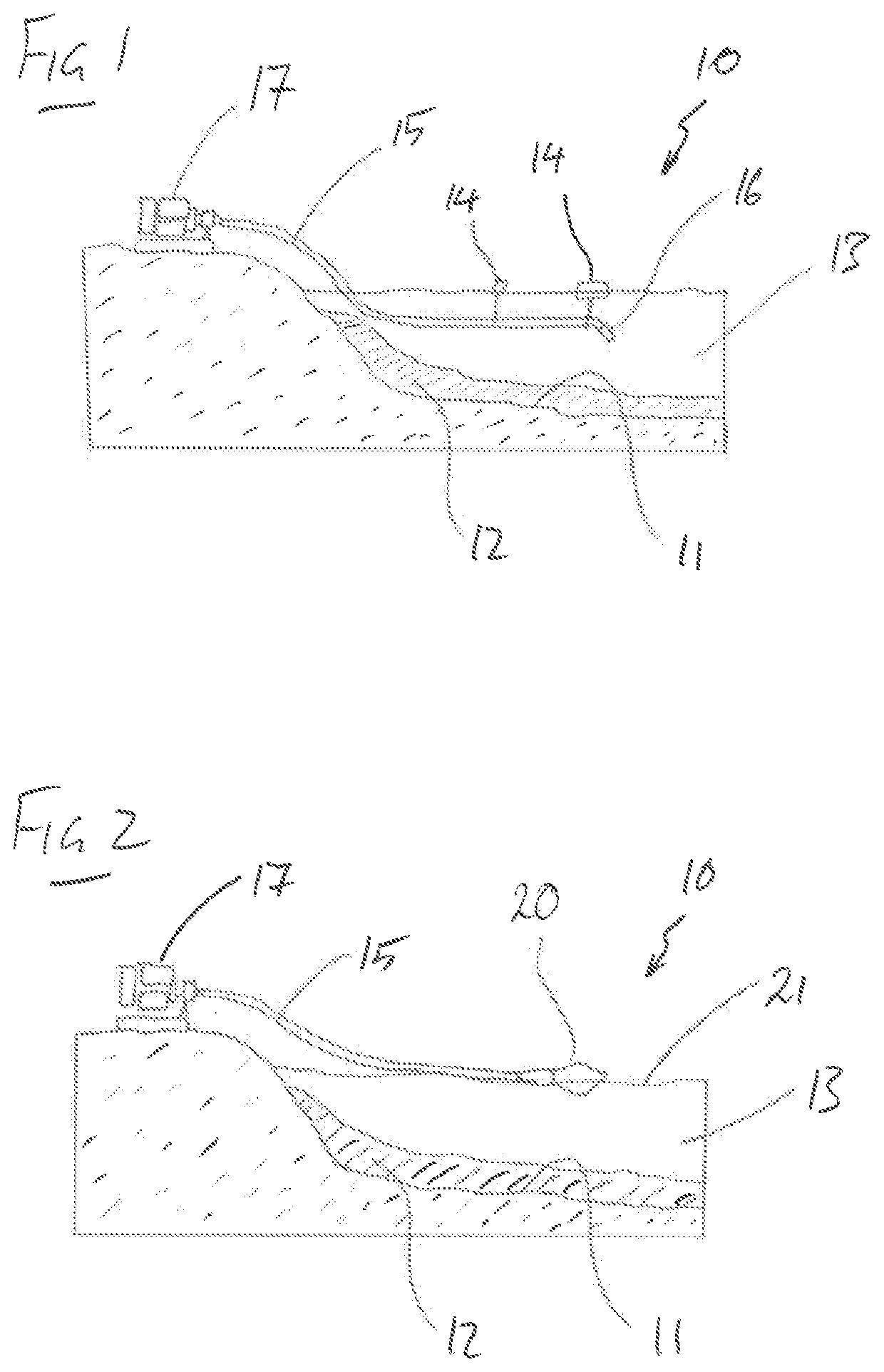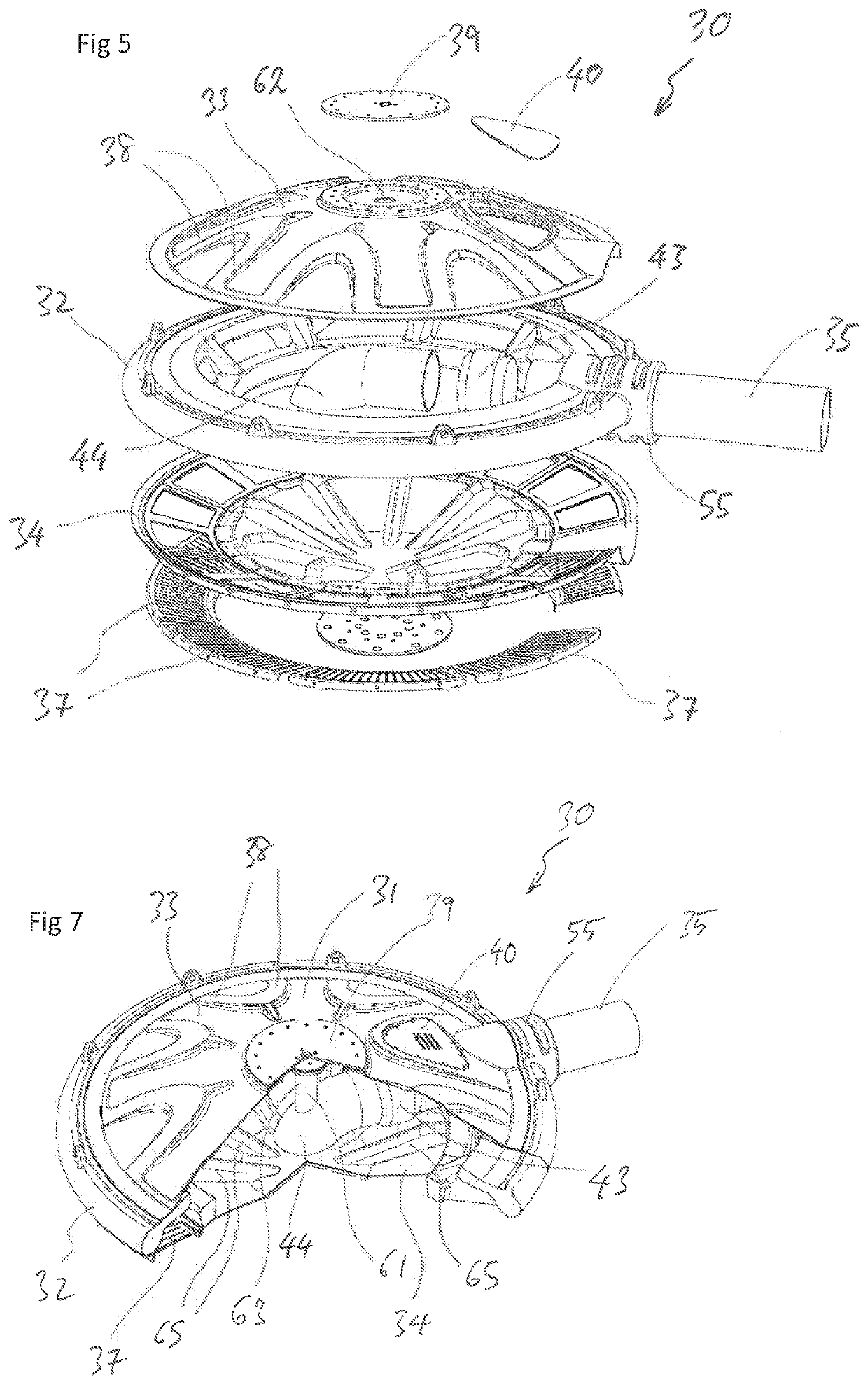Floating Liquid Intake
- Summary
- Abstract
- Description
- Claims
- Application Information
AI Technical Summary
Benefits of technology
Problems solved by technology
Method used
Image
Examples
Embodiment Construction
[0067]FIG. 2 is a similar illustration to FIG. 1, but showing schematically, a floating liquid intake 20 according to the present invention in use. FIG. 2 illustrates several of the same features as FIG. 1 and for those features, the same reference numerals are applied. In FIG. 2, it can be seen that the floating liquid intake 20 sits on the surface 21 of the body of water 13 rather than being suspended within the body of water 13 as shown in FIG. 1. It will therefore be appreciated, that the inlet to the liquid intake 20 is much higher than the inlet 16 of FIG. 1. This means that the inlet of the intake 20 of FIG. 2 is much further away from the silt and debris 12 and is located in water which should be cleaner than the water in which the inlet 16 of FIG. 1 is positioned.
[0068]FIG. 3 is a side view of a liquid intake 30 according to the present invention. The liquid intake 30 can be the same as the liquid intake 20 of FIG. 2. The liquid intake 30 has a housing 31 comprising an annu...
PUM
| Property | Measurement | Unit |
|---|---|---|
| Depth | aaaaa | aaaaa |
| Level | aaaaa | aaaaa |
Abstract
Description
Claims
Application Information
 Login to View More
Login to View More - Generate Ideas
- Intellectual Property
- Life Sciences
- Materials
- Tech Scout
- Unparalleled Data Quality
- Higher Quality Content
- 60% Fewer Hallucinations
Browse by: Latest US Patents, China's latest patents, Technical Efficacy Thesaurus, Application Domain, Technology Topic, Popular Technical Reports.
© 2025 PatSnap. All rights reserved.Legal|Privacy policy|Modern Slavery Act Transparency Statement|Sitemap|About US| Contact US: help@patsnap.com



